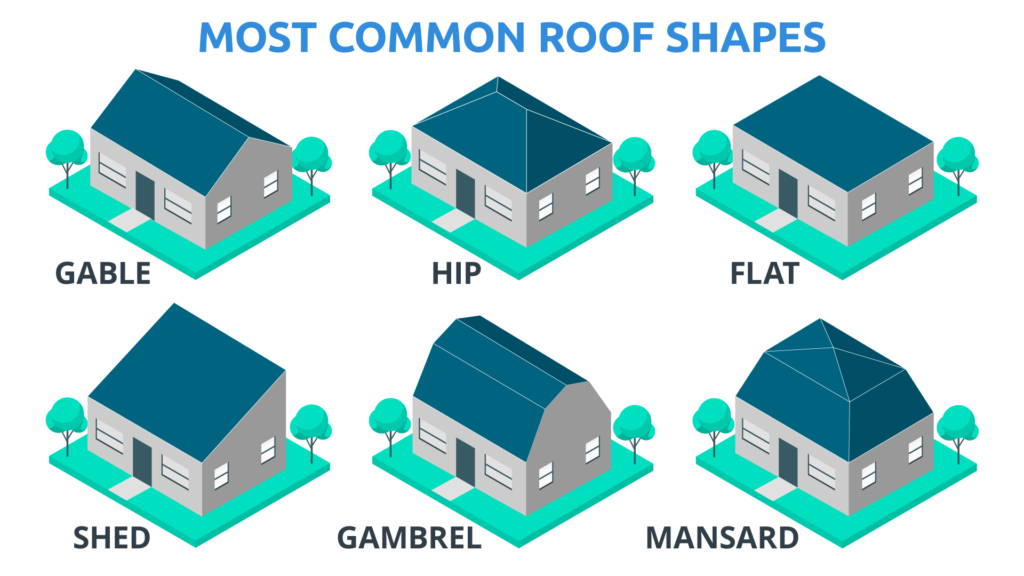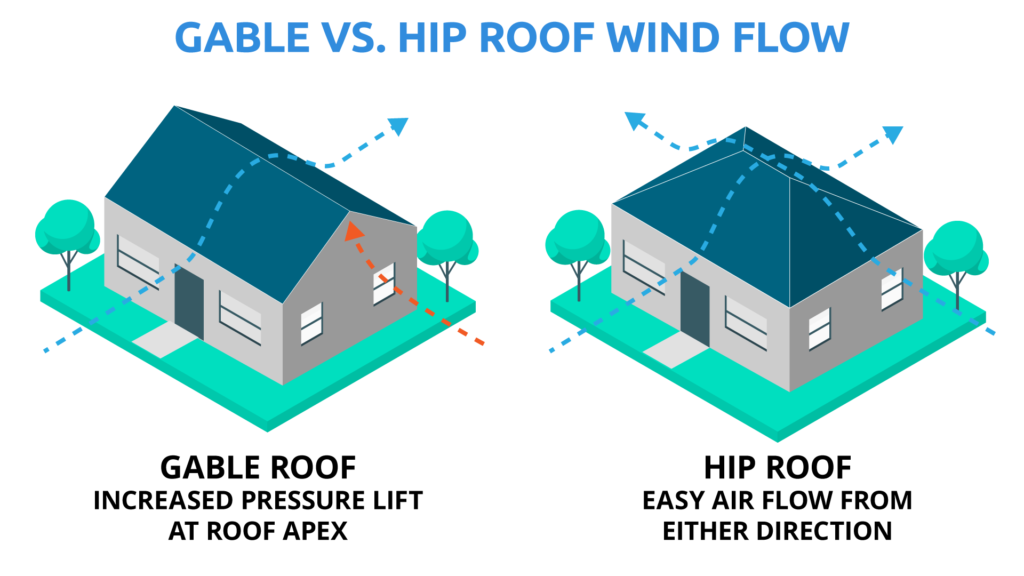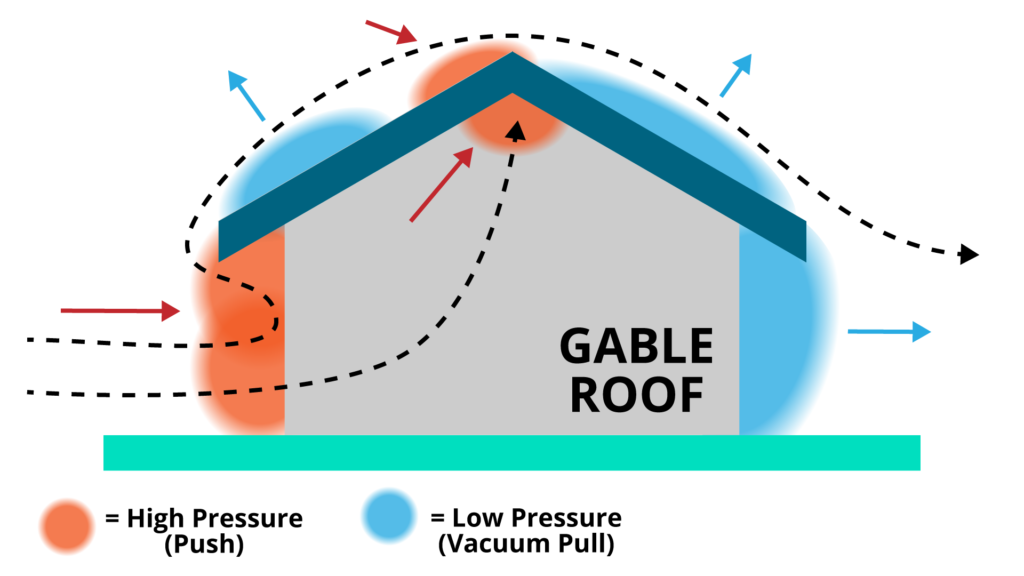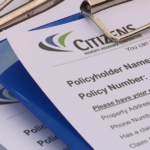When it comes to your Florida home insurance policy, there are some factors that can cause your homeowners premiums to be higher than other factors.
The main factors are:
- the age of your house
- the location of your house
- the age and shape of your roof.
The age of your roof is pretty straightforward: you know that the older the roof is, the more likely that it will need to be replaced at some point, but a lot of homeowners don’t consider the shape of their roof when thinking about home insurance.
What Shape is My Roof?
If you’re not sure what the shape of your roof is, simply walk around the outside of your house and look at the roof line (the edges). Compare what you see with these most common roof designs.

In southwest Florida cities like Fort Myers and Cape Coral, the two most common roof shapes are the Gable and the Hip roofs. If you see one or more sides which have a triangular shape (or some variation), then it’s typically a gable roof. If your roof is pointed and the edge of the roof is parallel to the ground, then it’s a hip roof.
Even if your house isn’t shaped like a rectangle, these roof shapes still apply. For example, if your house is shaped like an L or a T when viewing it from above, and your house has slopes on every side like a Hip roof, then you have a Hip roof. If you have a triangular shape on one or more sides, then you have a Gable roof.
What is the Best Roof Design for Hurricanes?
The best roof shape to get the cheapest home insurance rates is a hip roof because the hip roof design has fewer sharp corners and lower-incline slopes. Because of these features, a house with a hip roof will generally perform better in a windstorm, especially in a High-Velocity Wind Zone like southern Florida. In fact, a hip roof can reduce your homeowners insurance premiums by close to 32%.

How the Shape of Your Roof Affects Your Home Insurance Premium
After each hurricane, the State of Florida reviews the damage and updates their building standards to prevent further damage in the future. Florida building codes require houses to be built using designs and materials that should withstand minimum 120 mph winds, however as a rule-of-thumb, the newer the house is, the higher wind speed it’s designed to withstand. Most current construction standards are designed to withstand wind speeds of about 175 mph.

In the above picture, don’t think of red areas as “bad” and blue areas as “good”. The colors are there to help you understand how air will flow. It’s the same as fluid dynamics: high pressure will push As air flows over and around your house, areas of high pressure push against the structure while areas of low pressure create a vacuum and pull against it. Any geometry of your house that causes friction against the wind will increase the pressure against your house.
Are Flat Roofs More Expensive to Insure?
Generally, yes a flat roof is among one of the worst roof shapes that you can have with regard to Florida homeowners insurance. Flat roofs typically don’t move enough water quickly enough off the roof and the flat shape creates increased suction upward during hurricane-strength winds.
How Roof Failure Happens
Assuming that all exterior openings (windows, doors, and any other openings) remain shut during a wind storm, then the air pressure inside the house will help to maintain the house’s strength. If any opening allows air inside the house during a wind storm, it allows the storm even greater leverage from both inside and outside of the house which usually results in the roof being peeled up and away from the walls.
Think of it this way…
It’s similar to opening one of those jars where the lid pops up the first time you open it fresh from the grocery store. When the food is stored in the jar the manufacturer vacuums the air out of the jar which causes the lid to suction down on the rim with greater force. This is why opening the jar for the first time requires greater strength and leverage to open it: because you’re fighting against the low air pressure inside the jar.
Once the jar loses the internal air pressure, the lid comes off easily. The same goes for your roof, which is the “lid” of your house.
The size of your roof overhang is also a main factor in the strength of your roof. Generally, the greater the overhang, strong winds can have more leverage and increase the risk of your roof being lifted off the house. While it’s not a requirement, roofs with an overhang less than 20 inches from the wall are ideal.
The roof-to-wall connection is also very important. The area where the roof attaches to the wall is known as the “roof deck”. Your roof will typically be attached using one of the following:
- Toenails (weakest)
- Clips (a little stronger; typical on wood frame homes)
- Single wraps (stronger)
- Double wraps (strongest but rare)
How long do roofs last in FL?
Keep in mind that these are rough estimates, but you can usually expect roofs to last based on what material they’re made from.
- Asphalt shingles last 15 to 20 years
- Concrete or Clay Tiles typically last at least 20 years
- Metal Roofing lasts 15 to 40 years
Related: When is it Time to Replace Your Roof?
How much will a new roof lower my homeowners insurance?
If your roof hasn’t been replaced since 2002, replacing your roof may be one of the best ways of lowering your Florida homeowners insurance premiums. You could see a reduction in your premium of anywhere from 15-25%. Insurance carriers assume that a new roof that is professionally installed will be much less likely to leak and damage which will reduce the amount of risk that they would have to carry regarding your home.
While a new roof for a Florida house typically costs between $10,000 and $20,000, it’s definitely worth letting your homeowners insurance agent know. You will most likely need to order a Wind Mitigation Inspection form to be submitted to your homeowners insurance carrier. It’s up to you to notify your insurance agent about any updates that you make to your house which might give you savings.








